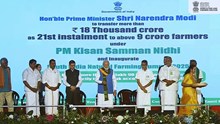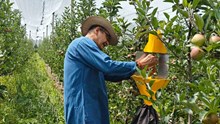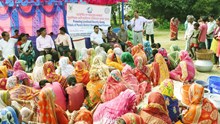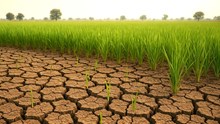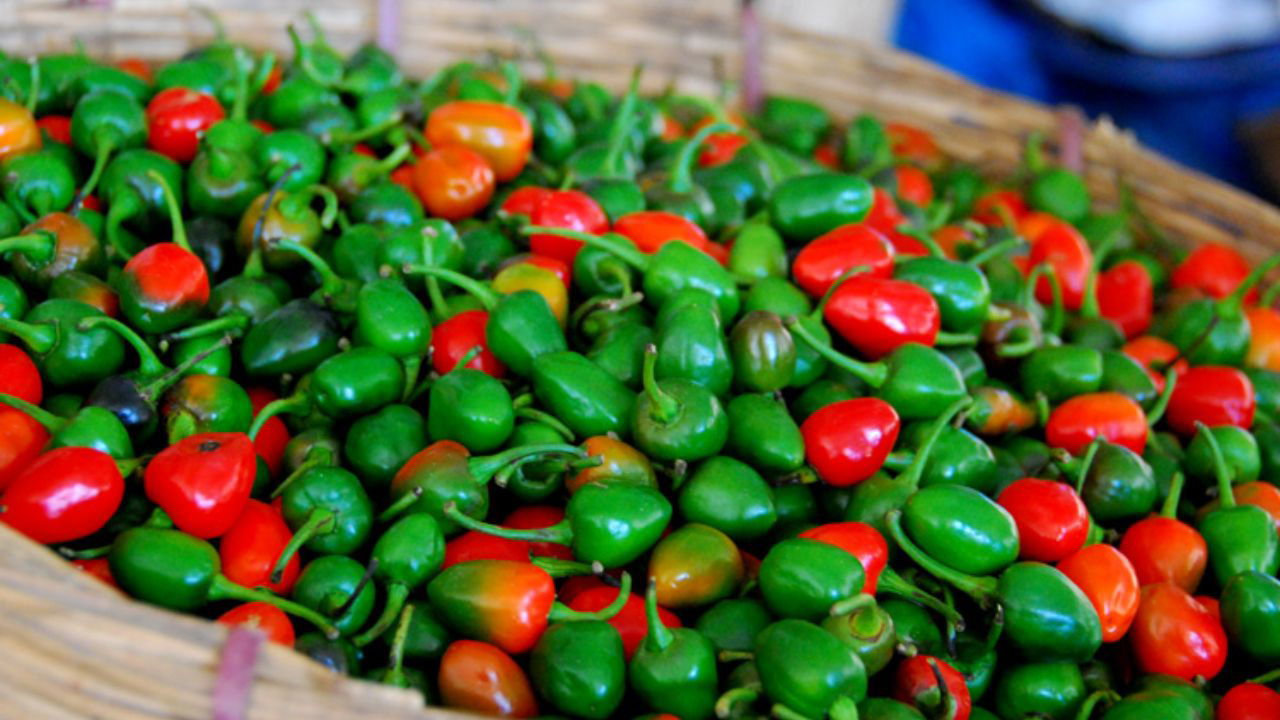
Sikkim's agriculture is renowned for its commitment to organic farming, with one of its flagship crops being the Dalle Khursani, a prized and fiery spice. 'Dalle,' derived from the Nepali word for 'round,' refers to the chili's distinctive spherical shape. Known for its intense heat, Dalle Khursani ranks among the hottest chilies in the world, with a Scoville Heat Unit (SHU) ranging from 100,000 to 350,000.
Traditionally cultivated through sustainable methods passed down through generations, this chili has gained global recognition, especially after being awarded the Geographical Indication (GI) tag. Today, it stands as a highly profitable crop for both domestic and international markets.
Cultivation and Climate
Dalle Khursani is well-suited to warm, humid climates with the best temperature between 20-25°C. The soil preference of this crop is sandy loam with a neutral pH of 6-7. Since Sikkim has naturally acidic soil, farmers add dolomite to soil to stabilize the pH. Dalle Khursani is cultivated mostly organically, and Sikkim being India's first organic state helps promote organic cultivation.
The farmers begin by planting seeds in the nurseries between the months of March and April. The seedlings, after 30-35 days, are planted in the field with a plantation spacing of 1m × 1m. Organic manure such as farmyard manure (FYM), vermicompost, and neem cake is applied to add more nutrients to the soil. Black plastic mulch is utilized to suppress weeds, retain soil moisture, and regulate temperature. Proper watering is required but not over watering is avoided to prevent the crop from causing bacterial wilt.
Nutritional and Medicinal Value Of Dalle Khursani
Dalle Khursani is not only about being hot; it is also full of nutrients. It is full of capsaicin, which provides it with its spiciness. It is anti-inflammatory and antioxidant in nature. The chili is also full of Vitamins A, C, and E, as well as minerals such as potassium, magnesium, and niacin. Its medicinal value makes it useful for digestion, pain relief, and metabolism. It is a natural antioxidant due to the occurrence of carotenoids and phenolic acids, which is all part of its overall health benefits.
Harvesting and Processing of Dalle Khursani
The plant is ready for harvest 90-120 days after transplanting. The farmers pick the chilies several times (5-8 harvests) as they mature. Green chilies are used fresh, whereas red ripe ones are dried or processed to be made into pickles, pastes, and powders. The rising demand for organic and naturally processed spices has added to the economic value of Dalle Khursani.
Pest and Disease Management
Dalle Khursani is a hardy crop that can be attacked by pests and diseases. The most serious pest problem for this crop is the fruit fly. The fruit flies lay eggs within the fruit, causing it to rot and resulting in yield losses. Farmers can control this by placing fruit fly traps and manually removing infected fruits. The crop is also attacked by aphids, which suck sap from the plant and cause leaf curling. Organic methods, such as neem oil spray, are used to manage pest infestations without compromising the crop's organic status.
Global Recognition and Export Potential
The GI tag given in 2021 has considerably boosted the market value of Dalle Khursani. This recognition has helped in branding the chili as an exclusive product of Sikkim, making it easier to access international markets. There is an increasing demand for organic, high-quality spices globally, particularly in regions such as the USA, UK, and Australia.
These countries are where people are interested in rare, naturally cultivated products. Dalle Khursani has the potential to be a luxury export commodity with appropriate processing, packaging, and marketing.
Dalle Khursani is an integral part of Sikkim's cultural heritage and goes beyond simply being a spice. Its reputation has been further enhanced by the recent GI tag, which has improved market options for farmers. This chili may guarantee its spot on the world spice map by emphasizing organic certification, sustainable farming methods, and appropriate export routes. Dalle Khursani might have a major impact on Sikkim's and other regions' agricultural economies with further research and better cultivation methods.






